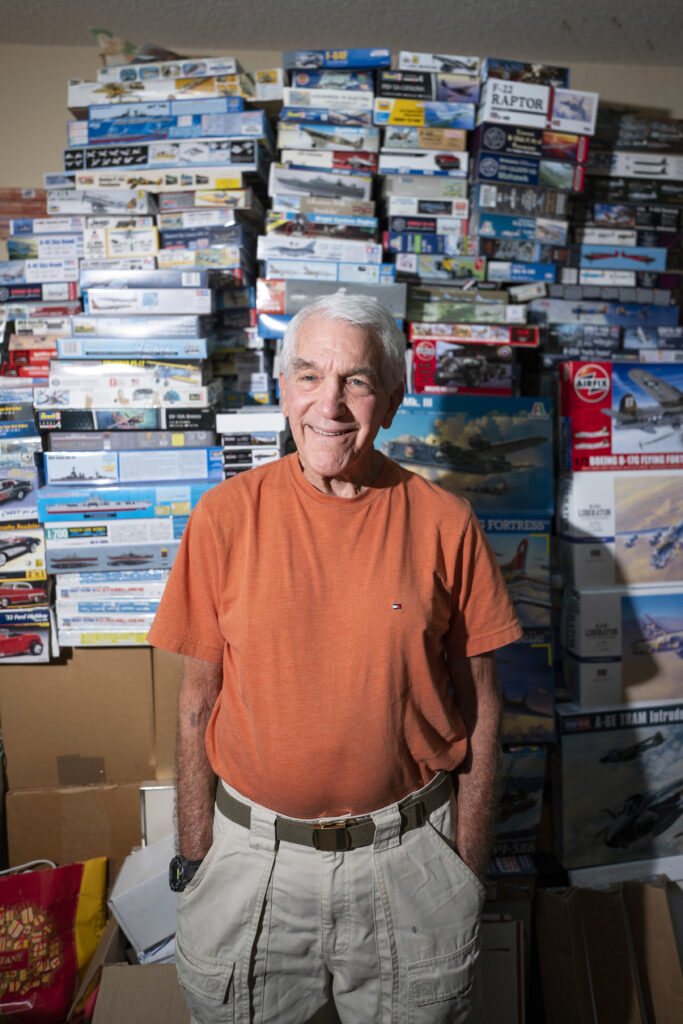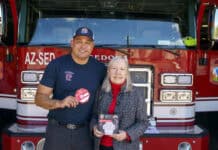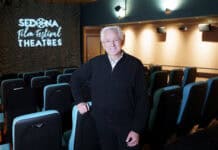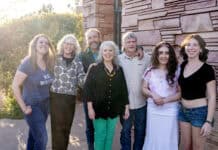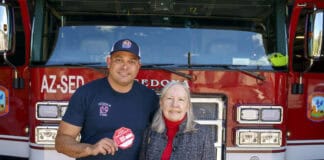Lewis Levin is a history buff. He and his wife Kathy have traveled the world, visiting France, Spain, the Netherlands, Hungary, Czech Republic and Germany, visiting museums, churches, synagogues, or other places of remembrance marked by war.
They spent time in Normandy, France, to see the Caen Memorial Museum, dedicated to D-Day and the Battle of Normandy during World War II. They visited Omaha Beach, one site of the largest amphibious invasion in the history of warfare on June 6, 1944, when more than 150,000 soldiers from the United States, Canada and the United Kingdom eventually pushing the Nazis out of Western Europe. The Levins went to Sainte-Mère-Église, the first town liberated by the 82nd Airborne Division and home of the Airborne Museum commemorating those paratroopers troops during the war.
Levin served in the U.S. Air Force from 1966 to 1970 during the Vietnam War. He was stationed stateside all four years at Tinker Airforce Base in Oklahoma. At the base, he serviced F-4 “Phantom” fighters and B-52 “Stratofortress” bombers. It should be no surprise that Levin is captivated by the history of war. His hobby of 50 years, making model aircraft, submarines and warships, is a testament to that.
Levin has a mancave in his home filled with hundreds of boxes of models. Floor to ceiling stacks of models — models stuffed behind closed cabinet doors — even duplicates of the same model that he purchases from different manufacturers because of the details. Some are better than others, he says. “Today, the modeling industry has gotten to the point where they are so precise in the details and the quality. And the price as well,” Levin says. “I used to buy models for like $5 and $10 apiece. Now those same models are $40 and $50. The industry has really come a long way and developed a lot of precision. On top of that, the industry has developed this whole model aftermarket of photo-etched parts, which add to the details of the model, making it even more specific.”
Levin opens drawers that are stuffed with aftermarket items. Whether it’s a cannon for a warship, plane emblems — even nose art — a military tradition of painting decorative designs on the front fuselage of a warplane. In total, he estimates that he has over 1,000 models — however, he said that he never really counted them. Of that number, Levin says he has only completed about 1% of them. His daughter, Rachel, says he is one model shy of being a hoarder.
“Out of this chaos comes this detailed model,” he said. “Yes, it’s organized chaos.” Maneuvering through the model room takes a minute; he is usually the sole occupant. A dedicated footpath takes him directly to his workbench, where he carefully and meticulously builds these replicas of war. “I know where everything is until I put something away and a week later, I’ve forgotten where I put it and I can’t find it for the life of me,” he said. “And then two months later it’ll show up — lo and behold — totally unexpected when I was looking for something else. That’s the way life works.”
Levin began building models as a kid and remembers the details of his craft. “I can remember two models that I built when I was very young, it was a replica of the USS Missouri and F9F ‘Panther’ — a Korean War fighter jet.” Levin says that he picked modeling back up as he got older and had more time to dedicate to it. “I find that there’s so much more to it in the detail part and the attempt to try to reconstruct a model to be identical to the real thing,” he said. “My process basically was just teaching myself by doing it, getting books and magazines, practicing and working at it.”
Levin began exclusively with planes, then moved into planes of a certain era. His fascination took him to explore aircraft of WWII, the Korean War in the ’50s and even further back to biplanes of World War I. “When you’re researching, you’ll learn the capacity of a B-17 — what the performance is, how much is bomb load is, what’s the number of crew on the plane, what its missions were, all of that sort of stuff,” Levin said. “When you do the research, you can read up on how the plane was designed and developed and the iterations it went through before it reached a particular stage.”
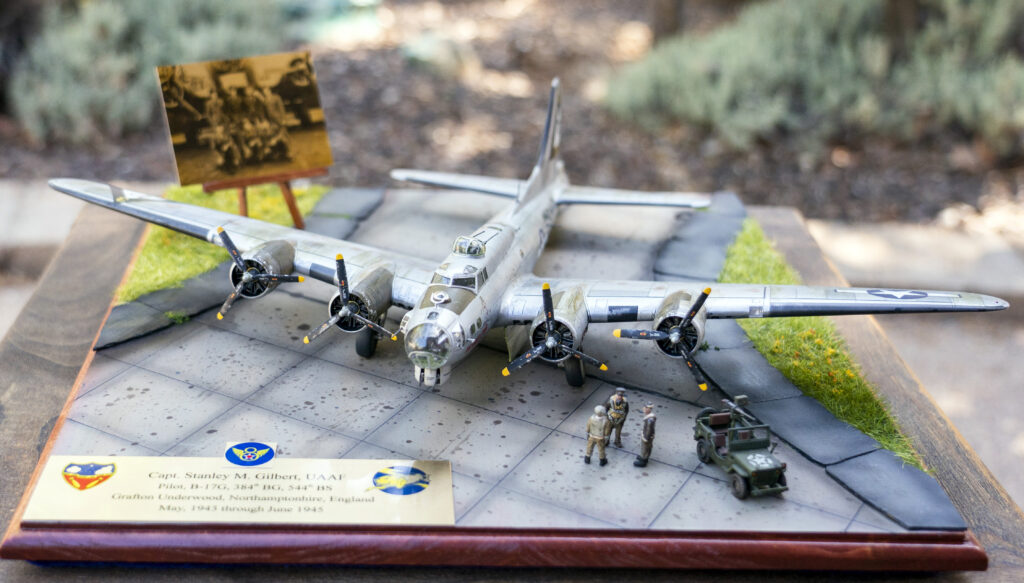
The Boeing B-17 “Flying Fortress” has special significance. His father-in-law flew a B-17 in WWII. Levin built a diorama of the aircraft for his brother-in-law’s 70th birthday, however, it took him two years to complete. The diorama shows the pilot and two of the gunners, the radio operator and one of the gunners standing in front of the plane in preparation for preflight. The plane is on the tarmac, preparing to head out for its mission — a scene that Levin says he wanted to create. Steve Crawley, an engraver, created a metal etched photograph of his father-in-law and crew while wood craftsman Dave Keeber who helped build the platform.
In June, the Levins carefully packed up the military diorama and drove it to Idaho to present the memento to Kathy’s brother for his 72nd birthday. “You develop the idea of what you want to build and then you deal with being a perfectionist,” Lew Levin said. “That’s kind of the road you follow. You just keep working until you reach a point where you feel that you’ve perfected this piece and you’re satisfied with it. And, like any artist, you’re never really satisfied. But you reach a point where you have to say, OK , it’s done.”
“The B-17 model made in remembrance of my dad and his 25 safe missions and as a gift for my brother is emblematic of all of Lew’s heart and mind,” Kathy Levin said. She remembers coming to Sedona to visit her grandparents. Her father would fly the family from California and pass by their home, tipping the wings of the plane, indicating that they could pick them up at the airport.
The Levin’s moved to Sedona in 1977. Lew Levin was the first attorney for the city of Sedona and compiled all of the legal work needed for its incorporation in 1988. Afterward, he practiced as a public defender in Coconino County from 2013 to 2017 and is currently working as a magistrate for the City and Justice Court in Flagstaff.
At 76 years old, Levin says he has no plans to retire or give up modeling. When asked what is he going to do with the 1,000 models he currently has, he laughed as he responded, “Leave them to my daughter. I will let her deal with it.”
